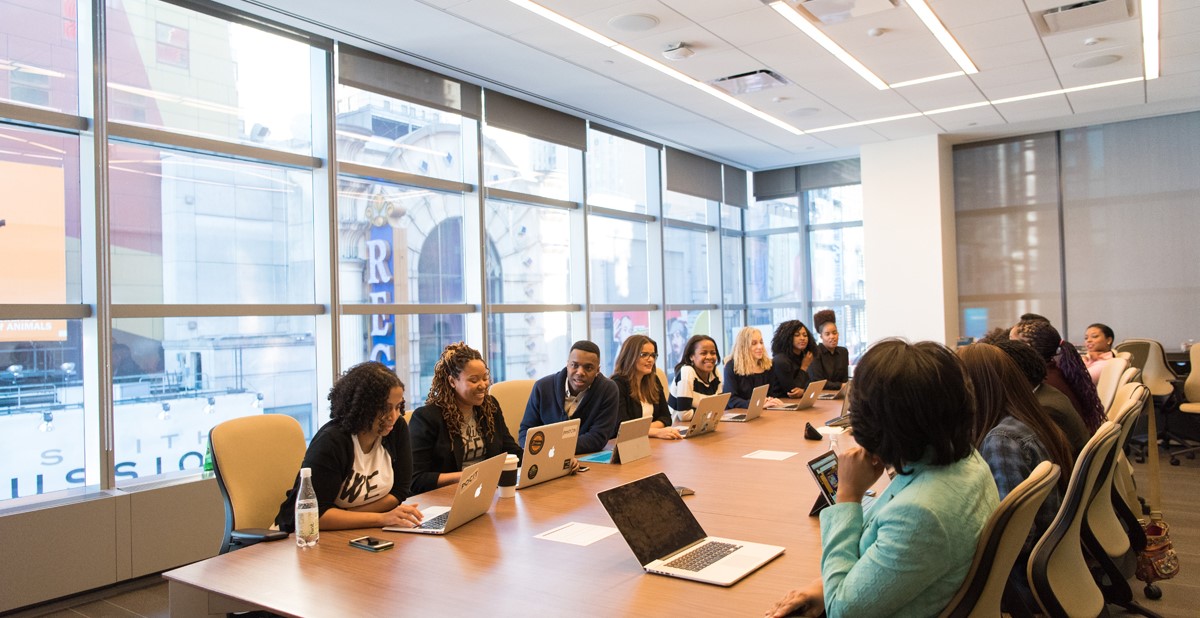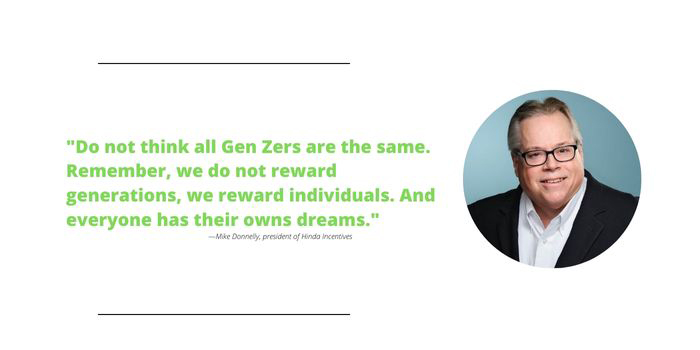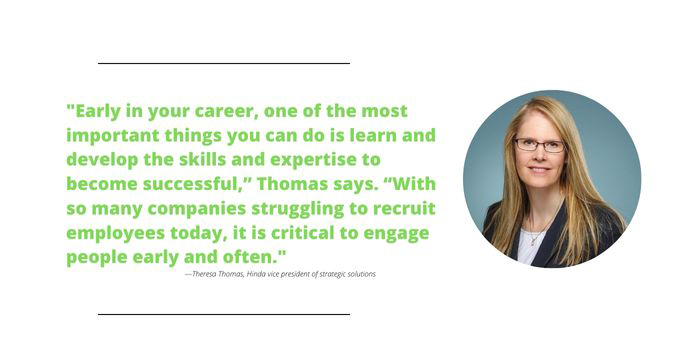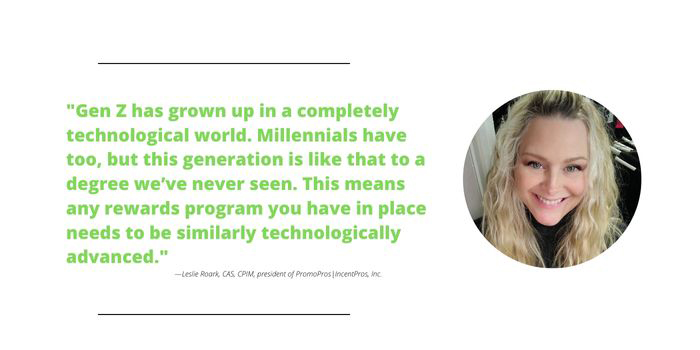Reaching The Gen Z Workforce Through Promotional Products

The workforce is skewing younger. A 2022 study by the Society for Human Resource Management Gallup found that Gen Z is expected to make up 36% of the working population by the end of the year, and that number will only grow larger. This is a group with unique needs in regards to their careers and employers, and companies are looking for the most effective rewards to engage their employees.
“It seems Gen Z-ers value workplace incentives more than any other generation,” says Leslie Roark, CAS, CPIM, president of Spring, Texas-based PromoPros | IncentPros, Inc. “They like smaller perks, daily perks that they can enjoy on an all-year-round basis. This could be free coffee, flexible hours, etc. They also are very concerned about the environment and want to support companies that give back. This is the same we found with Millennials, but it’s true to a stronger degree with Gen Z-ers.”
The Goods:
Awards built around merchandise, like promotional products, can be particularly effective as they help the recipient visualize the gift as part of their lives. This concept is part of Chicago-based Hinda Incentives’ incentive program development process, because when a participant sees an appealing merchandise award, they imagine using it—they think about the picture quality of a TV or imagine friends and family around a new grill. The company recognizes that the power of non‐cash awards like travel and merchandise lies in the participant envisioning themselves with the award.
“Young employees like Gen Zers are typically just getting started,” Mike Donnelly, president of Hinda Incentives. “They want brand‐name items and are looking for their own style. When a company offers them a wide selection of name‐brand awards, they will engage with the program for the rewards they choose. They picture using those rewards, see them in their homes and imagine telling their friends about getting it because they work at a great place. A merchandise award can give them a sense of their own style and a sense of pride.
“But one caution: Make sure you offer a wide selection. Do not think all Gen Zers are the same. Remember, we do not reward generations, we reward individuals. And everyone has their owns dreams.”

Incentives Vs. Recognition:
Incentives and recognition represent two distinct concepts in workforce motivation, both representing opportunities for promotional products businesses.
- An incentive is an offer or a thing that encourages one to do something specific.
- Recognition is showing appreciation or giving acclaim for an achievement or ability.
Hinda Incentives frames an incentive as a reward of value to the recipient which also demonstrates the recipient’s value to the organization, while recognition is most effective when it is public and in front of peers. Public recognition not only reinforces the value of the recipient to the organization but also communicates to other employees the behaviors the organization values.
Hinda recommends incentive programs to its clients that incorporate a personal reward that is valuable and memorable to the recipient with public recognition to maximize the benefit of the program.
“Some of the most effective programs at engaging employees early in their careers recognize a person as they complete training and then reward them for demonstrating competence afterward,” says Hinda Vice President of Strategic Solutions Theresa Thomas. “This approach helps onboard new employees by reinforcing learning with recognition and rewarding them when they apply their new skills immediately.”
Gen Z are generally early in their careers and relatively new to the companies they work at. Onboarding new employees may provide an opportunity for recognition, such as framed certificates for completing training. Later, it can reward them for demonstrating proficiency following the training.
“Small wins matter, and Gen Zers are motivated by seeing their progress,” Roark says. “Something that will clearly show them on a daily, hourly basis where they are in a sales incentive program or a customer service program is a necessary engagement tool.”

Companies can also introduce employees to their incentive and recognition culture before they even start. Providing gifts prior to the initial starting date reinforces employees’ decision to join the organization. It also shows the new associate the value placed on them as part of the organization’s extended “family.”
“Early in your career, one of the most important things you can do is learn and develop the skills and expertise to become successful,” Thomas says. “With so many companies struggling to recruit employees today, it is critical to engage people early and often. Programs that recognize people for their achievements and reward people for successes engage employees putting them on a path to be advocates for their brand and the most valuable assets for the company.”
What Gen Z Wants:
What generation a person belongs to can be a better indicator of their communication style than their taste in particular rewards. In 2018, Hinda published Generational or Life Stage Influences? Putting it all Together to Change Behaviors, which noted that life stage can be a predicator of the awards a participant will choose. In its research, the company concluded that understanding a participant’s generation helps with communications but knowing the individual’s life stage pinpoints incentive awards that inspire action.
Further research from the Incentive Research Federation found that younger workers, such as those in the Gen Z (18‐22) and Millennial (23‐39) age categories, show a higher preference for developmental opportunities, such as ‘being given more responsibility at work.”
The IRF study, “Reward Preferences: Making a Lasting Impression on Incentive Program Participants,” surveyed 1,500 U.S.-based full-time employees representing a cross-section of industries on the rewards employees prefer the most, which rewards employers use most frequently, and which rewards most closely correlate to motivation.
“Gen Z has grown up in a completely technological world,” Roark says. “Millennials have too, but this generation is like that to a degree we’ve never seen. This means any rewards program you have in place needs to be similarly technologically advanced. Employees should be able to view their personal metrics and points balance—as well as choose what rewards they want—from any device.”

The foundation’s research revealed that certain incentive program approaches resonated well with members of Gen Z:
- Company logoed merchandise ranked among their top recognition preferences. The IRF marks this as an indicator of strong association with the employer, or “organizational identification.”
- Gen Z had a higher preference for receiving a plaque, certificate, or trophy that the older cohorts surveyed.
- “Going out for an early happy hour after work” ranked as the top experiential recognition preference for Gen Z.
- Gen Z workers place a higher value on ‘having dinner or lunch with company management’ as this is seen as aiding their upward mobility in the company.
The IRF cautioned managers to keep in mind that “one size does not fit all” and to get to know their employees if they want incentives and rewards to be truly motivating. No generation is homogenous, Gen Z included, so personalization is key as no recognition strategy that is universally embraced or dismissed.
“Because they've grown up in the digital age, Gen Z has also come to expect a high degree of personalization,” says Roark. “Think Netflix and Spotify, for example: Gen Z-ers are among these platforms' most frequent users, and therefore are used to the algorithms that give them highly personalized recommendations for music and TV. If rewards programs are similarly personalized, it’s a big plus in their minds and will keep them more excited and engaged. This also means giving users a high level of choice in what they receive. One choice doesn't suit all, so a wide variety of lifestyle gifts works best.
“Based on this, working toward a company picnic or Christmas party (while they always like a good party), is not the best motivation for Generation Z. Give them little daily incentives, and you’ll have an engaged employee looking to do their best for the company.”

